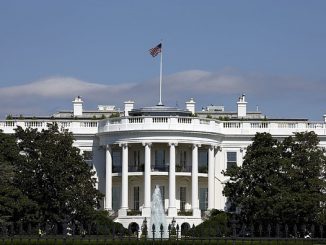For the rest of the 2009 Forecast series, click here.
I lump agency debt and MBS together because both are basically wards of the state at this point. They are also the best example of Quantitative Easing working that we have so far.
5-year bullet GSE debt (that is, non-callable) has declined in spread from about +150 in October and November to about +80bps. It will probably get down to about +50 before stalling there. Historically agency debt traded between +20 and +40bps, but I’d say that in a lower liquidity environment, agency paper won’t get that tight.
80bps ain’t nothin’ these days. With the 5-year Treasury now below 1.40%, one could argue that Agencies are generating 57% more income than comparable Treasury bonds. That’s going to continue to attract real money buyers looking for something that’s both safe and liquid.
MBS suffer from a severe negative convexity problem. MBS investors have essentially sold short an interest rate option to the underlying mortgage borrowers. Those borrowers are now almost universally in the money. Many borrowers will have difficulty actually refinancing (more on that below) but regardless, the price for MBS securities will have difficulty rising above $104 or so with an embedded in-the-money option with a $100 strike.
To see what I mean, notice the price spread across the coupon stack (using Fannie Mae 30-year MBS for February settlement):
- 4.5% Coupon: $101.938
- 5%: $102.750
- 5.5%: $103.203
- 6%: $103.656
- 6.5%: $104.500
This is the current dollar price for a mortgage security with the indicated coupon. Typically the underlying mortgages have a rate 0.5% higher than the coupon rate. Notice, for example, that the 6% bond at $103.656 is less than one point higher than the 5% at $102.75. To me that’s telling you that if rates were to fall by 100bps from here (implying the 5-year Treasury is 0.40%), the 5% mortgage would only improve in price by 1 point.
All this is to say that those hoping for price appreciation out of MBS should look elsewhere. But those looking to just collect fat income may have found a home.
Say you buy a generic 6% Fannie Mae MBS at $103.656. According to Bloomberg, that bond will pay at approximately 51 CPR (if you aren’t a bond person, just assume that means 51% of the loan will pay down each year, that’s close enough). That produces a yield of 3.09% with an average life of 1.5 years.
That isn’t half bad considering that Treasury bonds in 1.5 years are yielding about 0.40%. You have some reinvestment risk as the mortgage pays down, but by 1.5 years rates may be rising again, and so maybe that’s a good time to be reinvesting anyway.
If you are willing to do a little more work, you can do much better. Say you can find a pool with mostly 2006 borrowers. Most of those borrowers have experienced negative home price appreciation to some degree (not as bad as you might think because we’re only talking about conforming loans here, i.e., loans under $417,000). Anyway, couple this with a pool full of borrowers with 90+ LTV? Or mostly coastal geographics? Or relatively low credit scores? You might have a mortgage pool that will repay much slower than average.
Say you can pick a pool that pays at 40 CPR instead of 51 CPR. That increases your yield to 3.82%. 30 CPR? Now its 4.39% wih a 2.8 year average life. That compares very favorably with the 3-year Treasury trading at 1%!
Finding these kinds of pools is somewhat easier in hybrid-ARMs, which I love here on a pure relative value trade. But beware, the liquidity is much weaker in this sector. Otherwise I’d be a bigger overweight in hybrids than I already am. You can also get a lot of good high LTV loans in the GNMA space.
So if you are going to just buy and hold and don’t care about keeping up with Treasuries in a rally, MBS are probably as good an investment as any. But I’m underweight MBS, focused entirely on the kinds of specialized pools that I described above. I’ve basically dumped all my 5.5% and lower bonds.
So to make a prediction about the sector, I’d say the the Fed’s continued support will keep dollar prices relatively high, even if Treasury rates back off a bit. But overall I expect MBS spreads will perform extremely poorly should rates fall from here, and that has me cautious on the sector. I’d add heavily to MBS if the 5-year broke 1% or the 10-year broke 1.6%.
Callable agencies are kind of the worst of all worlds. There is no value-adding opportunities through pool selection akin to what can be done with MBS. And you have the same negative convexity problems, where if rates fall you get called away and if rates rise you get crushed. So I’d avoid most callable agency issues.
- Bulenox: Get 45% to 91% OFF ... Use Discount Code: UNO
- Risk Our Money Not Yours | Get 50% to 90% OFF ... Use Discount Code: MMBVBKSM
Disclaimer: This page contains affiliate links. If you choose to make a purchase after clicking a link, we may receive a commission at no additional cost to you. Thank you for your support!




Leave a Reply